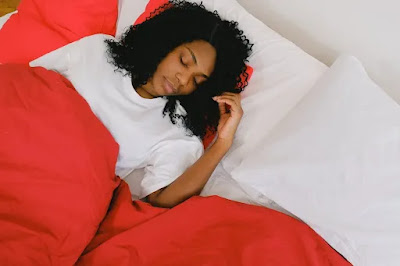Eating Disorders During the College Years: College life can lead to developing and relapsing eating disorders

(Family Features) Sending kids off to college can be anxiety-inducing for students and parents alike. Between newfound freedom, increased workloads, reduced structure, academic competition, increased social comparison, and the miles away from home, life as an undergrad is often largely uncharted territory.
Even before COVID-19 and the surge of associated mental health challenges, researchers revealed some startling insight on college students' mental health. One study, led by researchers at the University of Oxford, found one-third of college freshmen are coping with anxiety and depression at the start of the school year, and those numbers increase as the year progresses.
As if that weren’t enough, the college years also tend to intersect with the onset of most mental health conditions. Half of all cases begin by the age of 14 while 75% of lifetime mental illnesses present by the age of 24, according to research published in the “Archives of General Psychiatry,” with some of the most dangerous and prevalent mental health conditions on college campuses being eating disorders.
Navigating Mental Health Disorders
Trying to help young adults navigate their first real taste of “independence” – especially if you’re miles apart – can be a daunting task for parents. While the COVID-19 pandemic exacerbated many mental health conditions, it also helped make mental health awareness more of a household topic. Now, there are helpful resources for parents and students and less stigma attached to mental health diagnoses, so neither those with eating disorders nor their loved ones have to struggle alone.
Additionally, most people with eating disorders also struggle with other mental health conditions, such as anxiety, depression or ADHD. Managing a mental health condition is rarely easy and doing so in an unfamiliar environment – often without a proper diagnosis – can be especially difficult. By becoming familiar with the early behavioral, emotional and physical warning signs of eating disorders, parents may be better able to spot students’ problematic relationships with food and make early intervention a priority before symptoms spiral out of control.
Eating Disorders on the Rise
The unique convergence of environmental triggers, academic stress, and neurological development during the college years makes students a high-risk population for the development of mental health conditions with eating disorders being some of the most common. The prevalence of eating disorders among college students was stable from 2009-2018, but increased sharply in 2021 for both women and men, according to a study published in “Nutrients.”
 Signs of Trouble
Signs of Trouble
Recognizing a college student’s eating disorder can be particularly difficult, especially when students are away from home and attending school. Until it has progressed significantly, someone with an eating disorder may be quite effective at hiding it from others.
While different eating disorders present different symptoms, some common overarching signs that may suggest a problem include:
- Increased interest in dieting
- Excessive monitoring of food intake or weight
- Frequent negative comments about body image
- Poor eating habits, such as skipping meals or bingeing
- Rigid or excessive exercise schedules
- Significant changes in weight (loss or gain)
- Social withdrawal
- Changes in mood or behavior
Early Intervention
Early intervention can play a critical role in effective treatment of an eating disorder, but many families struggle with finding a treatment program that allows a college student to continue coursework while taking steps to improve health.
“A delay in eating disorder treatment can negatively impact the likelihood of recovery and increase the duration of the condition, needlessly prolonging suffering,” said Heather Russo, chief clinical officer for Alsana, a national eating recovery community that serves adult clients of all genders through in-person and virtual programs. “Parents of college students must be aware of the risks and triggers young adults face during these vulnerable years so they can help address issues and early warning signs as they arise.”
An option like Alsana’s Adaptive Care Model is a holistic approach to treatment that strives to create an inspiring healing experience and focuses on the patient’s total health through five core areas, including medical treatment, nutrition, movement, therapy, and developing a stronger sense of self-purpose.
This customized approach to treatment is available to students who seek flexible scheduling options, allowing them to get help remotely or on an outpatient basis.
“Because eating disorders touch so many facets of a person’s life, treatment must address healing for the whole person in order for it to be effective, sustainable, and nourishing,” Russo said.
Learn more about eating disorder treatment options that can help your student develop a healthier relationship with food at alsana.com.
Evaluating an Eating Disorder
If you’ve noticed some changes in your college student but can’t put your finger on exactly what’s wrong, an eating disorder could be to blame. Pinpointing a problem is the first step toward effective treatment.
If you’re concerned your college student might have an eating disorder, considering the answers to these questions, discussing them together, and talking with a doctor can help put your loved one on a path toward recovery. Or, if your student tends to be more private, ask them to take a survey to learn more about the likelihood of an eating disorder at alsana.com/survey.
- Do you attempt to restrict calories or foods?
- Do you make yourself sick because you feel uncomfortably full?
- Do you worry you have lost control over how much you eat?
- Have you recently lost more than 14 pounds in a three-month period?
- Do you believe yourself to be “fat” when others say you are too thin?
- Would you say food dominates your life?
Photos courtesy of Getty Images
 SOURCE:Alsana
SOURCE:Alsana






 Signs of Trouble
Signs of Trouble
